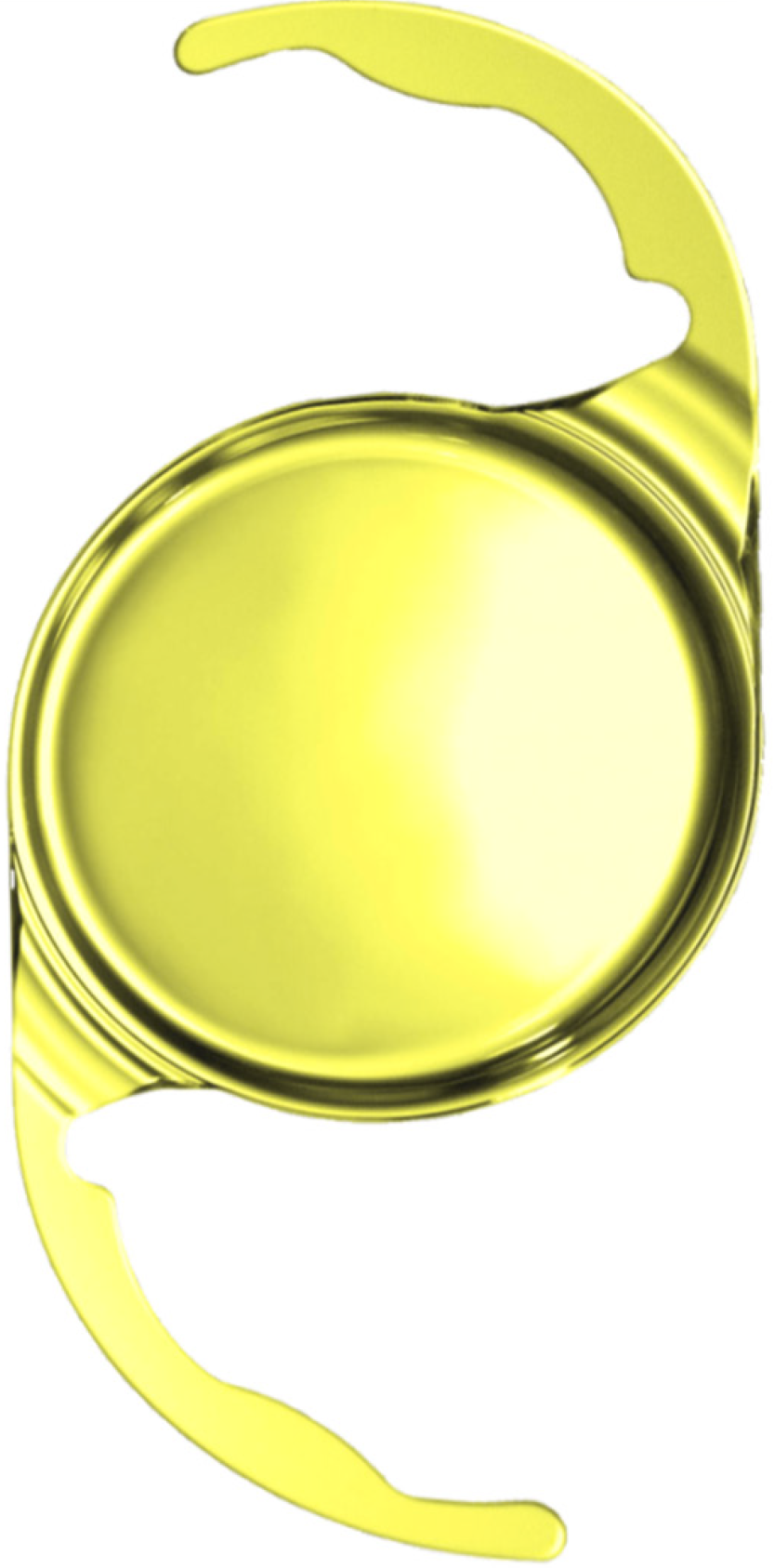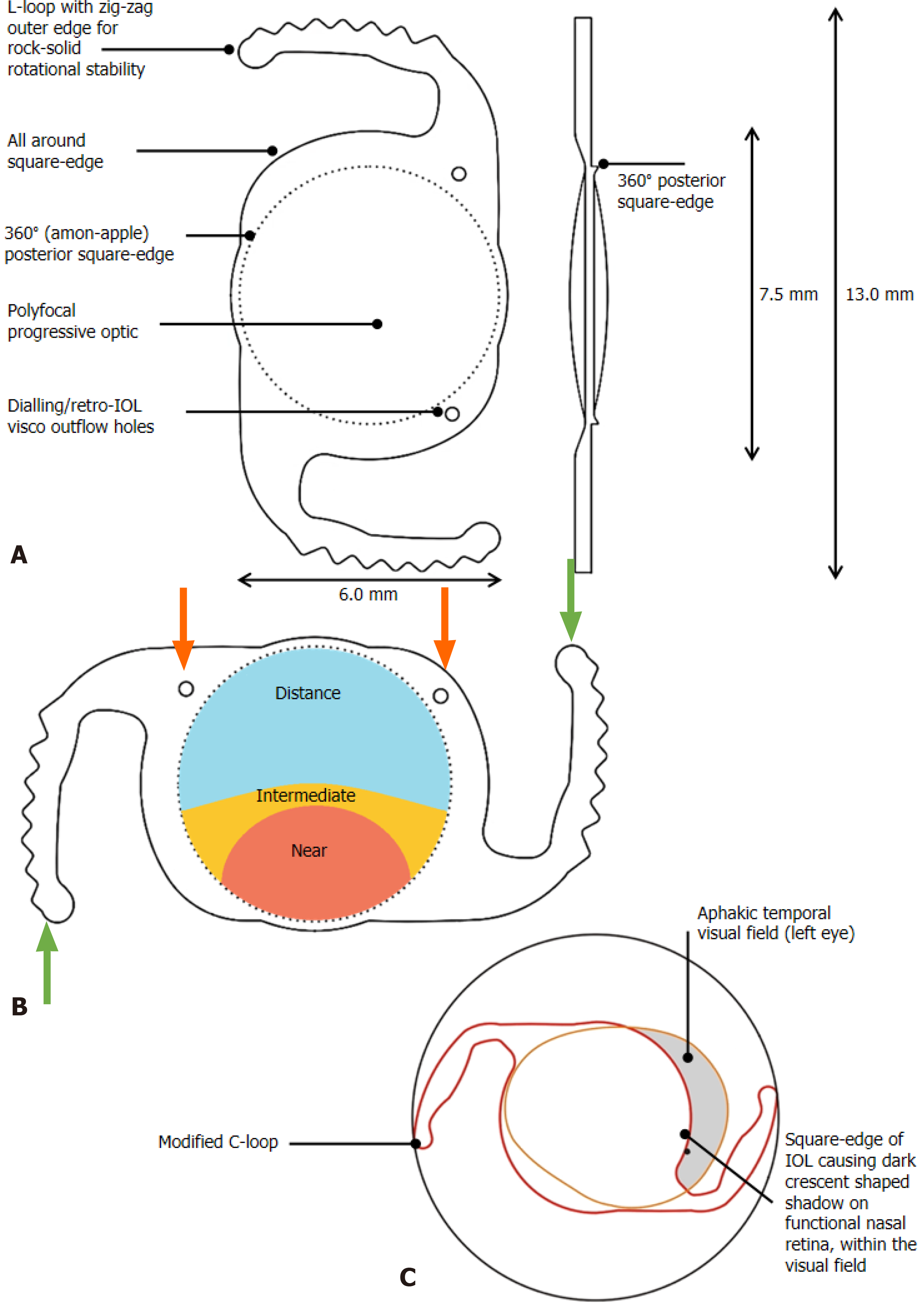Copyright
©The Author(s) 2024.
World J Diabetes. Jun 15, 2024; 15(6): 1199-1211
Published online Jun 15, 2024. doi: 10.4239/wjd.v15.i6.1199
Published online Jun 15, 2024. doi: 10.4239/wjd.v15.i6.1199
Figure 1 Heparin Coated Yellow intraocular lens (CT Lucia 621PY, Carl Zeiss, Germany).
The black highlight all around the intraocular lens denotes a surface coating of heparin which facilitates its unfolding within the capsular bag.
Figure 2 Progressive Polyfocal intraocular lens with GRIN technology (Spirant Autofocus Pro, Lifeline Medical Devices Private Limited, India).
A: Design features of the intraocular lens (IOL); B: Demonstration of polyfocal ringless GRIN Technology and L-loop haptics with zig-zag edges (green arrows). The dialing holes are position indicators to be kept in the upper half of the eye; they also help to drain remaining retro-IOL viscoelastic (red arrows); C: Disadvantages of conventional IOLs that are overcome by the oval optic diameter of 7.2 mm and larger optic size. IOL: Intraocular lens.
- Citation: Morya AK, Nishant P, Ramesh PV, Sinha S, Heda A, Salodia S, Prasad R. Intraocular lens selection in diabetic patients: How to increase the odds for success. World J Diabetes 2024; 15(6): 1199-1211
- URL: https://www.wjgnet.com/1948-9358/full/v15/i6/1199.htm
- DOI: https://dx.doi.org/10.4239/wjd.v15.i6.1199














